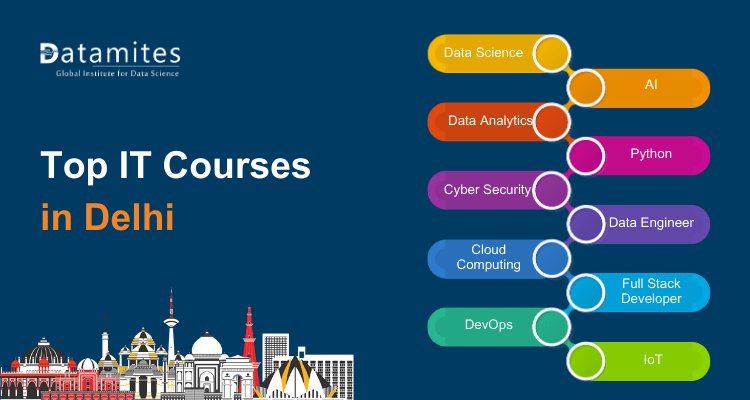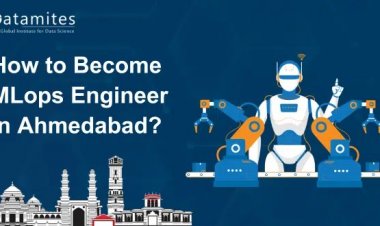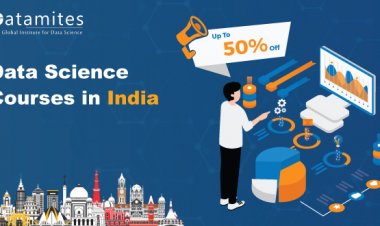The Anatomy of a Data Science Project: From Hypothesis to Insight
This blog breaks down the full lifecycle of a data science project, from forming a clear hypothesis to turning results into actionable insights. It highlights each step, common challenges, and why a structured approach drives real-world impact.

A data science project is more than crunching numbers or training a machine learning model. It’s a structured journey that starts with a hypothesis and ends with actionable insights. Without a clear process, even the smartest analysis risks getting lost in messy data or producing results that don’t matter.
That’s why the data science lifecycle is so important. It provides a roadmap, from framing the right question to collecting and cleaning data, exploring patterns through data visualization, building models, and finally turning results into decisions.
In this guide, we’ll walk through the complete data science process step by step. You’ll see how each stage connects, where common challenges arise, and why mastering the full cycle is essential if you want to succeed in a career in data science.
The Data Science Project Lifecycle: Step-by-Step Process Explained
Let’s break down the anatomy of a typical data science project, step by step.
Step 1: Defining the Hypothesis
Every project begins with a question. In data science, that question takes the form of a hypothesis, a clear, testable statement about what you expect the data to show.
Example: Customers who receive personalized emails are more likely to repurchase within 30 days than customers who receive generic emails.
Why is this important? Because a fuzzy problem statement leads to fuzzy results. A sharp hypothesis gives your project boundaries and ensures the data analysis serves a purpose.
This is also where data science skills like problem framing and domain expertise matter most. A good hypothesis isn’t guesswork, it’s informed by business context, past evidence, and critical thinking.
Step 2: Collecting and Understanding Data
Once the hypothesis is set, you need the raw material: data. Data collection can come from databases, APIs, spreadsheets, sensors, or surveys. But here’s the challenge, in real-world projects, data is often incomplete, inconsistent, or scattered across multiple systems.
Understanding the scope, quality, and limitations of your dataset is just as important as gathering it. Early-stage data analysis at this stage can uncover gaps, biases, or missing features you’ll need to account for later.
This step is also why the demand for data science professionals keeps climbing. Companies don’t just need people who can model, they need people who can find, wrangle, and evaluate the right data.
Step 3: Data Cleaning and Preprocessing
Raw data is messy. That’s why data cleaning and preprocessing take up so much of a project’s time.
Here’s what it involves:
- Handling missing values
- Removing duplicates
- Standardizing scales and formats
- Transforming text fields into structured data
On top of that, you have feature engineering, creating new variables that represent the problem better. For example, in a churn prediction project, features like days since last purchase or average order value often add more predictive power than the most advanced algorithm.
If you study real-world data science examples, one truth stands out: clean, engineered data almost always beats complicated models trained on messy inputs.
Step 4: Exploratory Data Analysis (EDA)
With clean data in hand, it’s time to explore. Exploratory data analysis (EDA) is about uncovering relationships, spotting patterns, and asking better questions.
This is where data visualization tools like Matplotlib, Seaborn, and Plotly shine. Charts and plots make hidden structures obvious, seasonality in sales, clusters of user behavior, or outliers worth investigating.
EDA isn’t just a box to tick. It’s the reality check in the data science lifecycle. Do the patterns support your hypothesis? Or do they tell you to pivot before wasting time on modeling?
Step 5: Model Building and Testing
Now comes the step most people imagine when they hear “data scientist”: model building in data science. This is where the machine learning workflow lives, choosing algorithms, training models, and tuning hyperparameters.
But here’s the catch: the goal isn’t maximum accuracy at all costs. It’s building a model that generalizes well to new data. That means using cross-validation, avoiding overfitting, and selecting the right evaluation metrics for the problem.
This step is only one part of the bigger picture, but it’s also what makes a career in data science exciting for many, the mix of coding, experimentation, and algorithmic thinking.
Step 6: Interpreting Results and Drawing Insights
Models output predictions, probabilities, or clusters. But numbers alone don’t matter until you interpret them.
Maybe your model shows that customers paying through a certain channel are twice as likely to churn. That’s not just a metric, it’s an actionable signal for retention strategies.
This is where the best data science skills show up. Translating technical outputs into business or research language, storytelling with data, is what elevates work from technical to impactful.
Step 7: Communicating Findings
Great analysis falls flat without great communication. A good data scientist isn’t just an analyst; they’re also a storyteller.
That means clear dashboards, intuitive charts, and simple explanations tailored to your audience. Executives want to know “What should we do?” Practitioners want to understand “How confident are we?”
When you look at real-world data science examples, the most successful ones aren’t those with the flashiest models, but the ones where findings were communicated in a way that influenced decisions. That’s also where the scope of data science reveals itself, it’s about impact, not just code.
Step 8: Iteration and Continuous Improvement
Here’s the truth: no data science project is ever final. Data shifts. Behaviors evolve. Models degrade.
That’s why the data science project lifecycle doesn’t end, it loops. You refine hypotheses, retrain models, and re-communicate insights as the environment changes. This iterative mindset is also central to modern data science trends, like MLOps and continuous deployment of models.
The future of data science belongs to those who treat projects as living systems, not one-off experiments.
This iterative mindset reflects broader data science trends too: continuous learning, adapting to new data science tools, and staying updated on the future of data science.
Refer to these articles:
- How to Build Data Pipelines: Step-by-Step Guide
- Beginner’s Guide to Data Collection in Data Science
- What Is Regression Analysis in Data Science?
Common Misconceptions About Data Science Projects
Even with all the excitement around data science, many organizations still misunderstand what it takes to run a project successfully. Here are some of the most common traps:
We just need to buy the right tool.
Tools matter, but they’re not the answer. Open-source options like Python and R already cover almost everything you need. What actually drives success is expertise, the ability to ask the right questions, structure the data, and interpret results.
Excel can handle it.
Excel is great for quick summaries and small datasets. But once you’re working with hundreds of features, millions of rows, or complex machine learning workflows, it simply can’t keep up. That’s when proper data science tools are essential.
Our business analysts are smart enough to figure it out.
Business analysts are critical partners, but data science requires specialized training in statistics, modeling, and programming. Strong collaboration between analysts, IT, and trained data scientists produces the best results.
We’re not a Big Data company, so data science isn’t for us.
This one holds a lot of teams back. The applications of data science don’t depend on massive datasets. In fact, many of the most impactful projects run on well-structured “small data.” Smart sampling and careful modeling often outperform brute-force approaches.
Once the model is built, we’re done.
A data science project is never one-and-done. Data drifts, customer behavior changes, and models lose accuracy. That’s why monitoring, retraining, and iteration are baked into the data science lifecycle.
So let’s recap. A structured project moves through eight steps: hypothesis, data collection, cleaning, exploration, modeling, interpretation, communication, and iteration. Skipping any step weakens the whole process.
Refer to these articles:
The applications of data science today stretch across every industry, from predicting medical diagnoses to optimizing supply chains. With that breadth comes opportunity. The data science career path is one of the fastest-growing globally, and the demand for data science talent continues to climb. In fact, Precedence Research estimates the data science platform market size at USD 150.73 billion in 2024, with expectations to grow to USD 676.51 billion by 2034, reflecting a CAGR of 16.20%.
If you’re aiming to become a data scientist, focus not just on algorithms but also on the entire project lifecycle. Build your skills in data science, from problem framing and data visualization to storytelling and model building. Explore an offline data science institute to strengthen fundamentals.
The future of data science will belong to those who combine technical mastery with curiosity and communication. The scope of data science is massive, but success comes down to a structured approach, turning hypotheses into insights that drive real-world impact.
You can pick up tools and techniques from any online or offline data science course, but the real growth comes from practice, running projects end to end, experimenting with workflows, and working through messy, real-world datasets. If you’re considering a data science course in Chennai, it’s worth choosing a program that emphasizes this kind of hands-on learning instead of just theory.
That’s where DataMites Institute stands out. They’ve built a reputation for producing job-ready professionals by focusing on what companies actually need. Whether you’re aiming for a career in tech, e-commerce, or business intelligence, the program is designed to get you there. The emphasis isn’t on memorizing theory, it’s on live projects and internships that give you the confidence to apply what you’ve learned right away.
The DataMites Certified Data Scientist courses carry global recognition, backed by IABAC and NASSCOM FutureSkills. Training covers the full spectrum, machine learning, AI, business analytics, and the core tools of the trade. These are the skills that drive real business impact, from sharpening customer insights to streamlining operations to making smarter decisions.
If offline learning works best for you, DataMites runs data science training in Hyderabad, Pune, Delhi, Bangalore, Chennai, Mumbai, Coimbatore, and Ahmedabad. If online is more convenient, their virtual programs are flexible and just as practical. Whether you’re starting your journey or leading a team that needs to upskill, DataMites focuses on practical, relevant training that turns knowledge into results.





